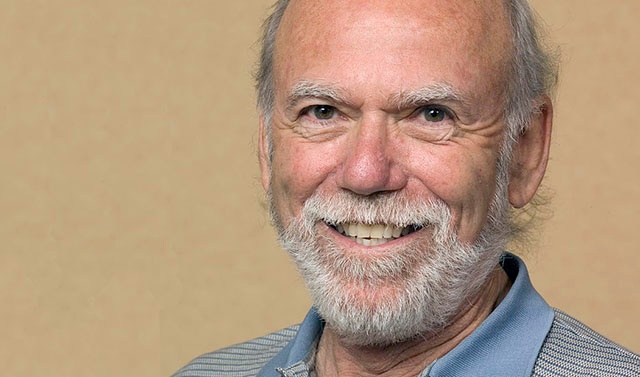Barry Barish is a Nobel Prize of Physics and one of the founders of LIGO, which detected the vibrations space-time predicted by Einstein a century ago. He will offer two conferences organised by the IFIC in the Museum of Sciences (3 July) and in the Parc Científic of the Universitat de València (4 July). Barish will address the discovery and will explain the future of gravitational-wave astronomy.
He was awarded the Nobel Prize of Physics and the Princess of Asturias Award for Scientific and Technical Research in 2017 because of his contribution in the detection of gravitational waves at the LIGO observatory. He has been invited to Valencia by the Institute of Corpuscular Physics (IFIC), the Severo Ochoa Centre for Molecular Biology of the CSIC and the Universitat de València.
He will explain the discovery of gravitational waves, which is the most important scientific finding in the last years, at the observatory LIGO. The conference is entitled “Gravitational-Waves: from Einstein to a New Science”. It will take place in the auditorium Santiago Grisolía of the Sciences Museum on Tuesday 3 of July at 7 p.m. Admission will be free with prior registration and there will be a simultaneous translation service. Albert Einstein predicted the existence of gravitational waves and space-time disruptions 100 years ago. However, its effects are so small that even Einstein doubted that they would actually be detected.
The problem was first studied by theoretical physics. It took 40 years to prove that these waves were actually real. Then, it was analysed by experimental physics. How could precise specific tools be developed to detect them? Using sensible techniques to this phenomenon, the Laser Interferometer Gravitational-Wave Observatory (LIGO) was able to observe in several occasions the gravitational waves emitted by the fusion of two black holes and the collision of two neutron stars. These observations have opened a complete new vision of the Universe: the astronomy of gravitational waves.
The bases of this new science will be discussed by Barish in the conference “Gravitational Waves: Detectors, Detections and the Future”. He will lecture the conference on 4 July at 12:30 in the Assembly Hall Marie Curie of the Parc Científic of the Universitat de València, within the programme Coloquios Severo Ochoa of the Institute of Corpuscular Physics. Barish will explain the innovations and evolutions that the high precision interferometers used in LIGO to detect gravitational waves, as well as the techniques used by the scientific collaboration to identify the origin of these waves and determine its characteristics. Finally, Barish will explain that the LIGO is conducted to increase its capacity detection. He will also address the next generation of experiments with gravitational waves.
Barry C. Barish (Omaha, USA, 1936) is an American scientist and an honoured professor of the California Institute of Technology (Caltech). He studied Physics and became a doctor in High Energy Experimental Physics at the University of California in Berkeley at the beginning of 1960s. He arrived to Caltech in 1963, where he has spent his entire scientific career. He carried out the first experiment with a high energy neutrino beam at the Fermilab, which is the main laboratory of particle physics in the United States. He participated in 1990s in one of the experiments conducted at the Superconducting Super Collider (SSC). It was a large particle accelerator that was going to be built in Texas and that was finally cancelled. Some members of the team started to build the Large Hadron Collider (LHC) of the CERN.
Barish became the main researcher of the LIGO in 1994. He obtained funding for the construction of two head offices of the observatory (Livingston and Hanford). When he became a director in 1997, he created the scientific collaboration LIGO, in which more than 1000 national and international researchers and technicians have participated. He directed the project in order to design the International Linear Collider (ILC) from 2006 to 2013. It was a new particle accelerator to deepen in the discoveries of the LHC, such as the Higgs boson. The Institute of Corpuscular Physics actively participates in the study of the phenomenon previously mentioned.
In February 2016, the LIGO announced the first detection of gravitational waves coming from the fusion of two black holes, followed by other similar detections. Barish was awarded alongside Rainer Weiss and Kip Thorne. The latter one was another promoter of the LIGO awarded with the Nobel Physics Award 2017 for his decisive contributions to the LIGO detector and the observation of gravitational waves. The three of them shared the Princess of Asturias Award for Scientific and Technical Research of that year with the cooperation of the LIGO.


